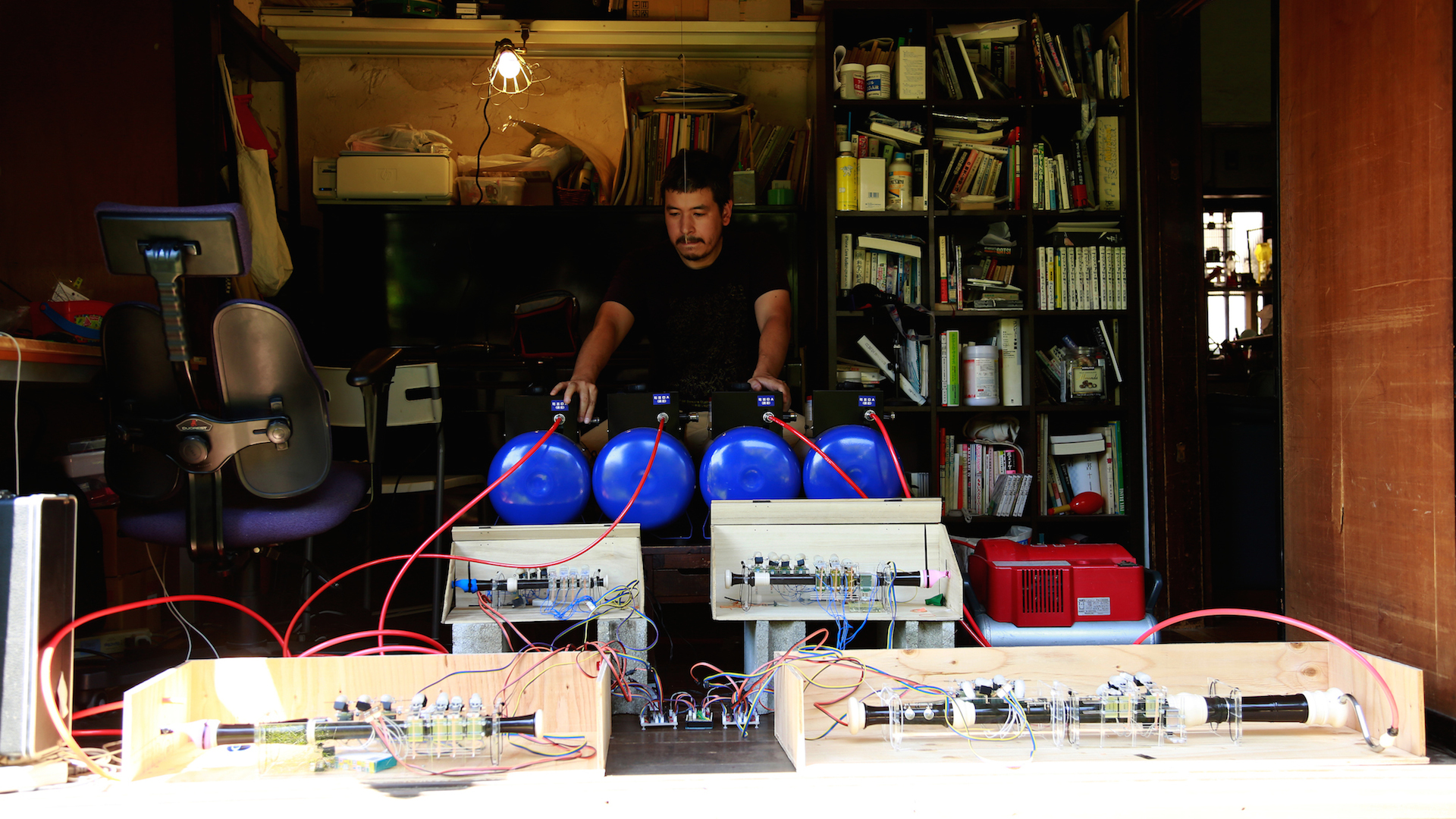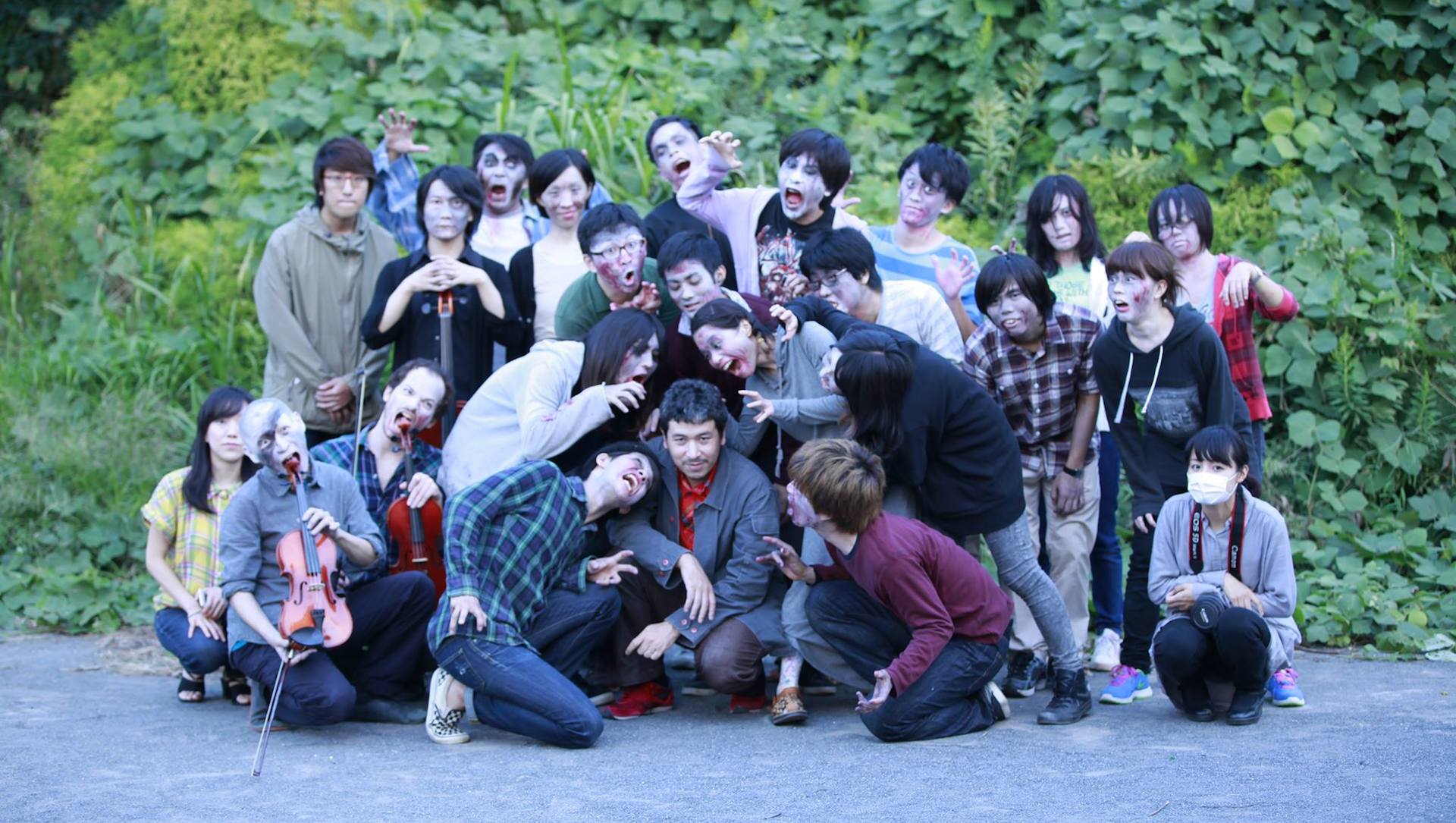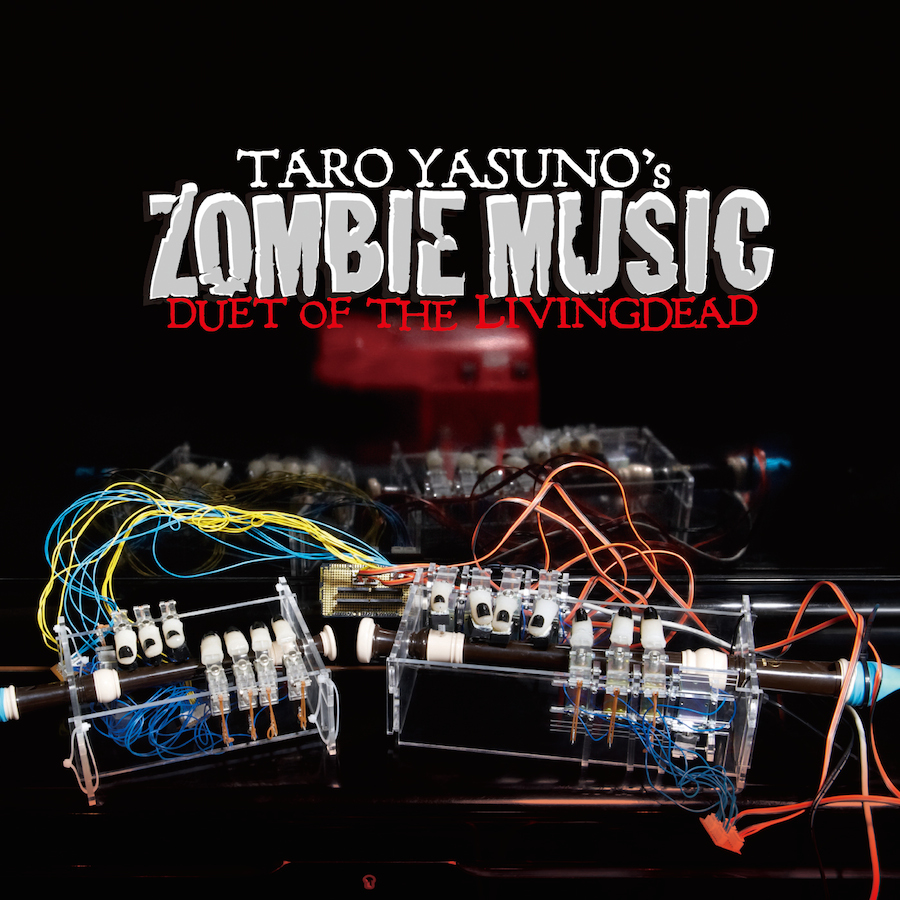“You're already dead.” - “So what?”
"from liner notes from CD [QUARTET OF THE LIVING DEAD]"
“You're already dead.” - it's been a while since I came across that line.
It was popularized by the 1984 TV Anime “Fist of the North Star”. When the hero Kenshiro, a practitioner of Hokuto Shinken, a martial art that causes internal damage instead of surface wounds, tells his opponent these words, their bodies start to deform and explode in a burst of blood.
The 1980’s were a period in which the postwar years, economic growth, cold war politics, socialism, philosophy and art, even modernity itself were declared to be “already dead”. During this decade, Zombies spread across the globe in a massive amount of movies, and Taro Yasuno’s generation spent the first days of their lives. In the twenty years that followed, information technology and the internet kept people inside the illusion that modernization, progress and development were marching forward. They had forgotten that they were “already dead”.
Who is a Zombie? None but ourselves. The difference between Zombies and other monsters is that they spread like an epidemic - people who get bitten turn into Zombies, until finally the whole of mankind has to spend their lives as Zombies.
The point that they have to “keep living” is important. The way Kenshiro’s defeated enemies explode in a burst of blood is just some sort of revolutionary romanticism. Reality is not as dramatic. Even after being told that “we're already dead”, all we can do is ask “so what?” and continue with our lives.
What, then, is “Zombie Music”? To be honest, I’m afraid I still don't know. Only one thing is for sure. For “computer music” or “media art”, this is certainly not some sort of new development, a form of “progress”. A few days ago I read an amusing newspaper article that described it as a “forceless, strange and curious performance”.
I assume that Taro Yasuno would welcome such a description. He may appear gentle and sensitive, but also owns a certain fearlessness. To me, his Zombie Music sounds like an undefeatable “so what?” towards any death declaration against art and music.
Hiroshi YOSHIOKA (Aesthetics)
The corpse as organic waste
"from liner notes from CD [QUARTET OF THE LIVING DEAD]"
“Zombie Music” to me is masterful “Contemporary Music” that also manages to fulfill defining criteria of Western Music: a composer exists, and the identity of the work is assured, together with the representability and uniqueness of the musical performance. This goes beyond mere speculation. It took shape in unusual and yet unheard soundworks only made from microtones. Moreover, the composer himself designed a robot system to perform these sounds, and since the whole process of this belongs to his musical creation, I can only bow my head and say “impressive!” Another fact is that the artist used the form of quartet to be played by self-made robots and released on this CD - an arrangement famous historical composers have favored in their musical experiments. This clearly shows the composers awareness towards historical western music… but then, why “Zombies” ? Is it because this needs a “story”?
Every time I hear “Zombie Music”, I feel something that could be called “brainlessness”. Listening to this sound organism as a whole feels like endless spasmodic movements of robot fingers or countless nerves triggering local reactions only by instinct. There is no integration or organization. In other words, any feeling or trace of the composer's “thought”, something that belongs to every composed work, seems to be totally absent in here. “Brainlessness” is also a keyword for my understanding of what Yasuno Taro means when he says “While eating electricity, you (we?) are already dead ”.
Our modern world, a place in which humanity has given away thought, which also means memories, judgements and preferences, to digital devices, and spends their time doing automated movements aimed at some sort of machinery. Indeed, we seem to have stopped being “human” the way we could imagine until yesterday, but does that indicate the beginning of the “next humanity”? And is this “Zombie Music” a critique or a compliment towards such a future? When Horror movies, a recent form of entertainment, are presented together with this music, I am unable to pass a judgement. For some reason I start pondering on the words of someone I know, a person who once told me: “When I'm dead, throw my body into organic waste”.
Masahiro MIWA (Composer)
Sing, Zombie, Sing! "from liner notes from CD [DUET OF THE LIVING DEAD]"
They're walking among us - Zombies, the living dead. There's reports them appearing in TV, movies, Anime, novels and other places - it's a worldwide phenomenon. Zombies, who wander about only guided by their hunger, and ourselves, who live inside consumer society without awareness ol'it, we share many traits. Ironically, Zombies don't feed on each other, whereas humans can't stop wars, competition and other forms ol',,cannibalism
In this regard, Zombies are a metaphor for ourselves, but also a ,,collective liveform more naive than us. Also, Zombies are increasing their number every day. They reflect the insecurity of
our present society: 9/11, economic stagnation, NEETS, SGshokukei-danshi (men who don't approach women anymore as potential partners but stay inside their own world), desperate marriage hunters, the employment crisis, 3/] l, the NIayan Armageddon... In the middle ofthis situation, composer Yasuno by intuition discovered the analogy between Zombies and our precarious human condition and created the World's first exemplar of Zombie Music.
It's played by a mechanically played recorder, the Zombie Machine. A computer's MIDI control is used to move artificial lingers made by Yasuno himself. Their movement is accompanied by clicking sounds, while an air compressor for construction sites gives the recorder its voice. However, a machine, which normally stands for precision, reveals its clumsiness in this analog state. Due to the instrument's characteristics, crazy sounds are played immediately if the pump loses pressure control even just a little (is that because a Zombie, a being on the threshold of life and death, is playing it?). This, however, is all intentional. iteration between late and coincidence continuously creates melodies of madness. By using lingerings that sound and don't sound simultaneously as a percussion section, one recorder can play polyphonic music (since there is two, these sounds are complex). Naturally, this wakes associations to tribal music as we know from Africa and other continents. Crossing the human and the Zombie stage, the sound returns to the tribal roots of the past. Sing, Zombie, Sing! This strange, playful yet endearing voice shall send shivers down our spines.
Keisuke Mitsuhashi (Music Critic)
Living Dead Music "from liner notes from CD [DUET OF THE LIVING DEAD]"
What do we expect when we go to watch a concert? Without doubt, we expect musical performances carried out by perfectly disciplined bodies. Such a body able to perform extremely difficult, maybe even "acrobatic" arrangements with superiority close to perfection and unmatched virtuosity, can move people´s hearts. Frank Zappa was trying to get there. But, since such a perfect musician didn´t exist, he moved towards music performed by machines. At some point it will probably be possible to build a robot able to play certain arrangements just like humans, or even better, with more perfection, surpassing the abilities and faculties of the human body. Yet still, there is doubt whether a machine, even when reaching such a level, can create moments as valuable and impressive as a body that has managed to achieve technical perfection. Zombie Music is music for two instruments, Soprano and Alto recorder, performed by mechanical fingers, which are moved by computer-controlled solenoids and wind inserted by an air compressor. This could be called automatized mechanical music. The instruments are not played by a human being but by a robot whose anatomy is modeled after human fingers. However, this robot is far from able to realize perfection in musical performance. It reminds of Nam June Paik´s Robot K-456 (1964). Robot K-456 was not a human-like robot; it had parts that could be called extremities, but was still an incomplete machine that couldn´t walk. Because of this, it gave the impression of a caricaturized "machine", remote from human-like appearance, which, in a certain way, created a feeling of comfort and ease. Zombie Music, also unable to achieve human resemblance, makes one think of a heavy-handed body that is unstable, needs maintenance and cannot play the instrument properly unless you take care of it all the time. If we assume that music needs to be performed by human bodies, this would imply that it gives importance to singularity instead of repetition or representation as in machines. However, the behaviour the robot fingers in Zombie Music always remains unstable. As they haven´t reached perfection, these fingers trying to replay previously programmed music share some resemblance with humans (Zombies?). No matter how you look at this unstable thing, its movements and tonal behaviour - it doesn´t bear the traits of mechanical music. A musical performance carried out by machines without guarantee for identity in representation is just like sound art, which changes its musical behaviour from situation to situation. This might be one of the reasons why Zombie Music gives a primitive, somewhat ceremonial or occultic impression. Finally, when this heavy-handed machine finishes playing its instrument, a feeling of relief visits you, together with awareness of yourself: you have been listening carefully all the time. The bonus track contains the 256 possible sounds for 8 tone holes, generated via bit-sequencer. If these are sampled one by one, new Zombie Music compositions become possible on your computer. In other words, the sub-zero preservation of the Zombie, a being on the threshold of life and death, has reached completion.
Minoru Hatanaka (Curator)





